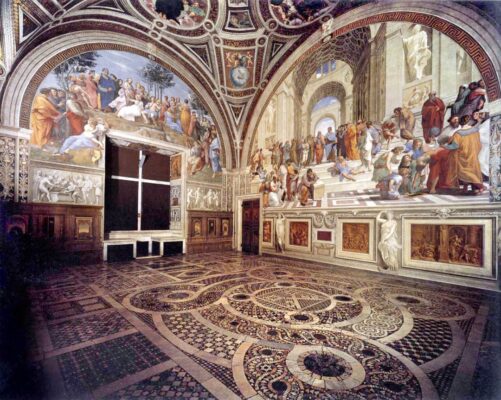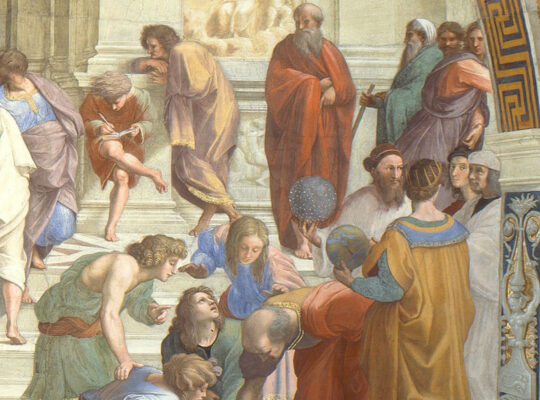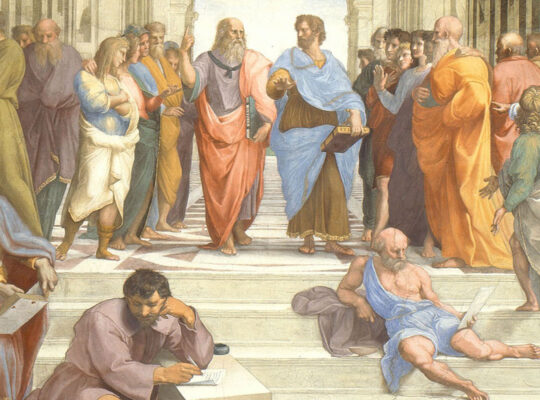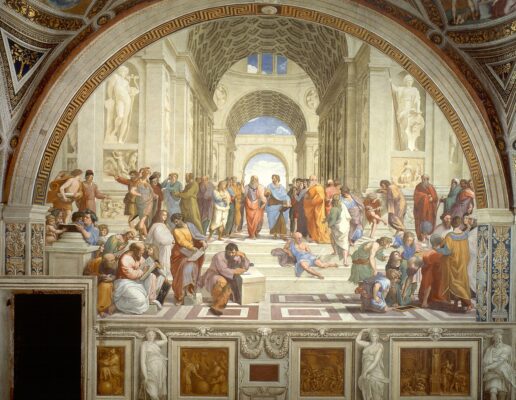Raphael · The School of Athens
1511- Fresco – Apostolic Palace, Vatican City
Like many other masterpieces of the Renaissance, the fresco of “The School of Athens” was born from a papal whim. The then newly elected Pope Julius II decided not to use the apartments of his predecessor, Alexander VI, and chose for himself some rooms decorated at the time with frescoes by various artists, including Piero della Francesca.
The young Raffaello Sanzio was commissioned to redecorate these rooms. We know that Raphael regretted having to destroy the works of Piero della Francesca, whom he admired. Perhaps to honor the old master, Raphael strove to paint in the “Stanza della Segnatura” a cycle of frescoes -enormous in ambition and exquisite in quality- dedicated to honoring human knowledge. The first painting to be completed was ” Disputation of the Holy Sacrament” (whose original title may have been “The Triumph of the Church”), dedicated to Theology. Later he painted “The Parnassus”, an ode to Poetry. And before painting “Cardinal and Theological Virtues and the Law”, Raphael created the most famous homage to classical Philosophy, the sensational “The School of Athens”.
The large dimensions of the fresco (more than 7 meters long by 5 meters high) allowed Raphael to create a complex composition in a setting highlighted by the strong perspective in the temple in the background. The two central figures, which Raphael highlighted by placing them against the sky that can be seen through the classical arch in the background, are Plato (represented as Leonardo da Vinci) and Aristotle. Around them, the complex scene includes some of the greatest thinkers, mathematicians and scientists of classical antiquity, which Raphael represented as some of the great artists of his time: Bramante as Archimedes, Heraclitus as Michelangelo, or Raphael himself as Apelles, who looks directly into the eyes of the viewer, as does Hypatia, dressed in white from the opposite side of the scene.
Admired by artists and art lovers of all ages, “The School of Athens” is one of the undisputed masterpieces of universal art, and a double homage to the science and philosophy of classical antiquity, and to the humanist spirit of the Renaissance.
Text: G. Fernández, theartwolf.com
Follow us on:




